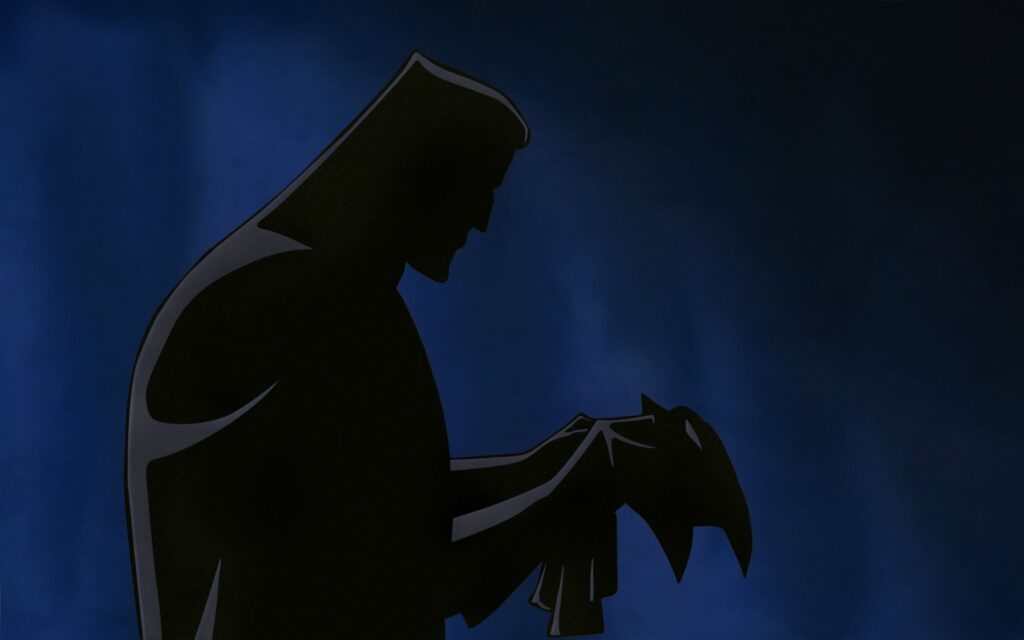
I often hear heated debates amongst my friends about Batman. Questions are posed to discriminate casual fans from the die-hard fans that know who Doctor Double X is. Many of these questions refer to the ultimate, definitive version of Batman, which for me would be either the work of Dennis O’Neil and Neal Adams or Grant Morrison’s landmark run. This debate extends to the cinema of Batman as well. And if one were to assess the films on two factors, cinematic execution and proximity to the narrative style of the comics, only one film truly excels in both: Batman: Mask Of The Phantasm (1993).
Mask Of The Phantasm was released when I was five years old (I still have the comic that came with the VHS). I cannot remember how many times I have seen this film, probably fifty. It’s a spin off movie of the television show Batman: The Animated Series, which was renowned for successfully blending the detective side of Batman with the action hero persona propagated by Tim Burton’s blockbuster film adaptations of the character starring Michael Keaton. It’s obvious looking back on the series and subsequent films today that the material is not traditionally child friendly. Both the show and film deal with a variety of more adult themes such as Stockholm Syndrome, Serial Killings, sado-masochistic relationships, and sex in general.
Mask Of The Phantasm is not just mature in the content of its narrative, but in the way it implements the language of the cinema. For instance, throughout the film Batman/Bruce Wayne experiences flashbacks to his youth when he was courting Andrea Beaumont and at the same time perfecting his approach to vigilantism. The employment of this device recalls the works of the film noir genre such as Robert Siodmak’s 1946 film of The Killers (the compositions in Mask Of The Phantasm even draw upon the cinematography of Elwood Bredell). This prevents the film from being another action-packed romp through Gotham City, elevating the Batman character closer to the gumshoe detectives Robert Mitchum and Humphrey Bogart used to play.
The character motivations in Mask Of The Phantasm stay equally close to film-noir conventions. Andrea Beaumont returns to Gotham to exact revenge on a group of crime lords disguised as the Phantasm; Batman/Bruce Wayne becomes obsessive over the case once it is revealed to him his ex-flame is involved; Councilman Arthur Reeves is as power hungry as he is corrupt; and the Joker is the only super-villain in sight. The indebtedness to film noir probably comes out of Frank Miller’s Batman: Year One (to which there are a dozen visual illusions in the film).
It is these established cinematic practices that create a stark contrast to the heightened reality of the superhero so that when the Joker appears in the film his presence is doubly menacing. Using film noir mechanics is the boldest and most successful gamble directors Eric Radomski and Bruce Timm could take. Allowing the Joker that moment, to appear so late in the film as an uncontrollable psycho killer makes the character seem fresh again. The Joker, because of this, is much more terrifying than in Christopher Nolan’s film The Dark Knight (2008), which introduced the Joker right away.
The conclusion, the final battle in Mask Of The Phantasm, pits the Joker first against Andrea Beaumont, then Batman, and Andrea again. Batman endeavors to save Andrea from her quest for revenge and ultimately self-sacrifice, but she will have none of it, leaving Batman to capture the Joker. Never before has the sadistic side of the Joker been so prevalent as in these final scenes, and even more disturbingly, Andrea is equally sadistic. Their “battle” becomes a gruesome slugfest with Batman hopelessly trapped in the middle.
The positions of these characters, as I have just described them, run throughout the picture. Batman is human, and it is his romantic investment in Andrea that prevents him from moving fast enough to prevent the films conclusion. The humanity Batman exhibited in Mask Of The Phantasm (its nice he is the focus of one of his films for a change), via his flashbacks, and voyeuristic stalking of Andrea has him abusing his position as a vigilante as well as succumbing to behavior that is immediately empathetic to the audience in how it recalls elements of a Gothic Romance.
Mask Of The Phantasm does not trade on the emotional superficiality of the Batman mythology as blatantly as Burton or Nolan have. Mask Of The Phantasm is one of the best super hero films ever made. That the genre is so popular today and so few people have seen this film is a shame. This is the film I recommend you watch this weekend.
